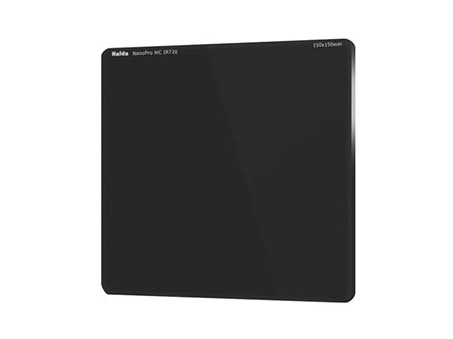Haida Red Diamond Reverse Grad Review
I feel like most photographers are familiar with common lens filters like polarizers, solid neutral density filters, and graduated neutral density filters.
We all love a sunrise, well at least those of us out of bed early enough to see one, but If you've ever tried photographing a sunrise (or sunset for that matter) you'll be aware of how challenging it can be. The sun and sky are extremely bright, everything else rather dark and that range of contrast is usually way too high for our cameras to capture in a single shot.
But there's another filter that can completely change how your images look and feel - a reverse graduated neutral density filter.
First of all, let's back up a bit, what exactly is a reverse ND grad?
It's going to be far easier to show you than describe what a reverse grad is, a picture is worth a thousand words and all that. The images below shows a photo without any filter and Haida 0.6 (2 stop) Reverse ND grad both made of K9 Optical Glass.
This dark area in the middle is key to the reverse grad. When photographing a sunrise or sunset, the brightest part of the image is usually on the horizon, where the sun is, and this is where you need the darkest part of the filter. As you move away from the horizon, the sky often gets a bit darker and thus needs less filtration and when this is the case, using a hard ND grad that is dark enough to hold back the bright light on the horizon can make the top area of the sky look unnaturally dark. The darkened area serves to limit the amount of light entering the lens, thus darkening bright skies. The lighter area on the bottom has no effect on the exposure of the landscape, so the filter evens out the light, helping your camera to create a better-exposed image.
The difference is that the darkest area of the filter isn't at the top, but is in the middle instead. That's because these filters are specially designed for shooting at sunrise and sunset, when the sun is at the horizon.
The dark middle portion of the filter reduces the brightness of that area, while a less dark area above that darkens the sky, as shown above.
And like traditional ND grads, the bottom of the filter is clear. In other words, it works just like any other graduated ND to help your camera get a well-exposed shot. The transition zone on the reverse grads is very gentle and as a result appears seamless in the images. I did find however that because the transition uses the whole top half of the filter, they are probably most effective when the sky takes up a good part of the image. It's also worth noting that to take full advantage of the transition zone you need to use a wide angle lens
Having not been totally happy with reverse grads I'd tried in the past, either due to their neutrality (color cast) or the smoothness of the blend of the reverse grad (or 'transition zone'), I was hoping that these would be an improvement and they didn't disappoint on either front.
With my new 0.6 and 1.2 reverse grads tucked safely in my filter pouch and full of anticipation to try them out, what became apparent pretty quickly, thanks largely to the weather, was how specialised these filters are. They are designed for a certain type of image taken in certain conditions, at certain times of day. Typically (and landscape photographers will know where this is going). As time passed and I used the reverse grads more frequently, I started thinking about how often I use each type of filter.
Build quality
Red-Diamond Graduated series of filters released last year are all made of glass and are all made from K9 optical glass and feature a shock and scratch resistant design.
The coating on the Red Diamond also helps to repel dirt, oil and water. With my Haida filters, I can easily wipe away debris with microfibre cloths and continue to shoot with it. This is especially crucial when shooting in rainy conditions or shooting seascapes, or bigs waterfalls where the spray is oftentimes a concern. Another good thing is the corners of the filters have also been rounded for easier installation into the M10’s filter slots.
Image quality
As i told before having not been totally happy with reverse grads I'd tried in the past, either due to their neutrality (color cast) or the smoothness of the blend of the reverse gradI'm very impressed by the image quality. I found these filters performed really well and I would consider the amount of colour cast to be negligible and the ultra-thin nano multi coating did an excellent job of minimising colour casting and preserving image sharpness
Value for money
Whilst the M10 filter holder kit and Red-Diamond filters are not the cheapest, considering the features and quality, I think they're great value for money.
CONCLUSIONS
Having been using these filters for a few months now, I really can't fault them, occasionally I would have liked the transition zone to have been a bit smaller but that's a minor thing and when used in the conditions they were designed for they perform admirably. Even when the light is a little more even and the contrast range less extreme like in the image below, the reverse grad has still proved useful for keeping the exposure balanced, in fact they have become my favourite filter for coastal sunrises and will be keeping their place in my filter wallet.
What I Liked
The transition zone on the reverse grads is very smooth
The easily cleaning method
No colour cast present
The sharpness
What I Feel Could Be Improved
I think the 1.2 is as little bit strong











